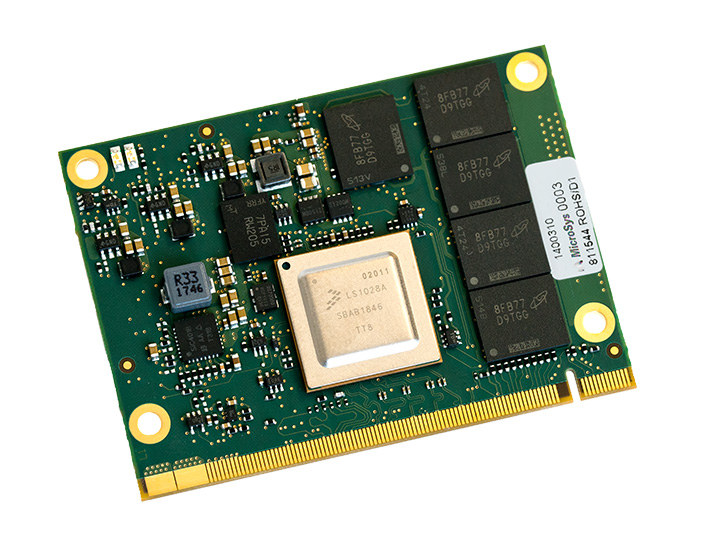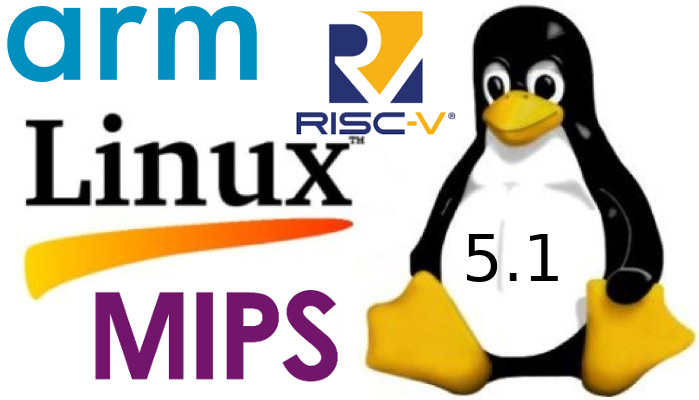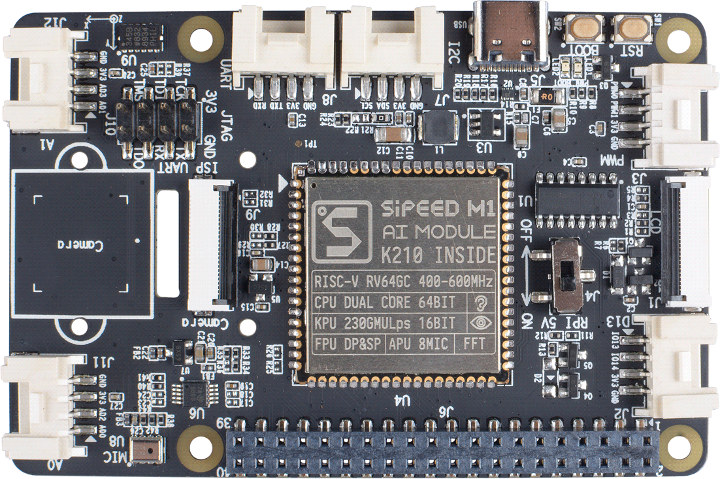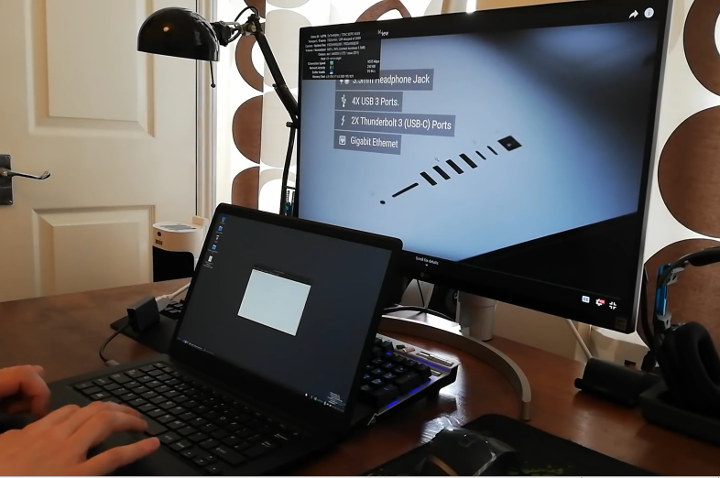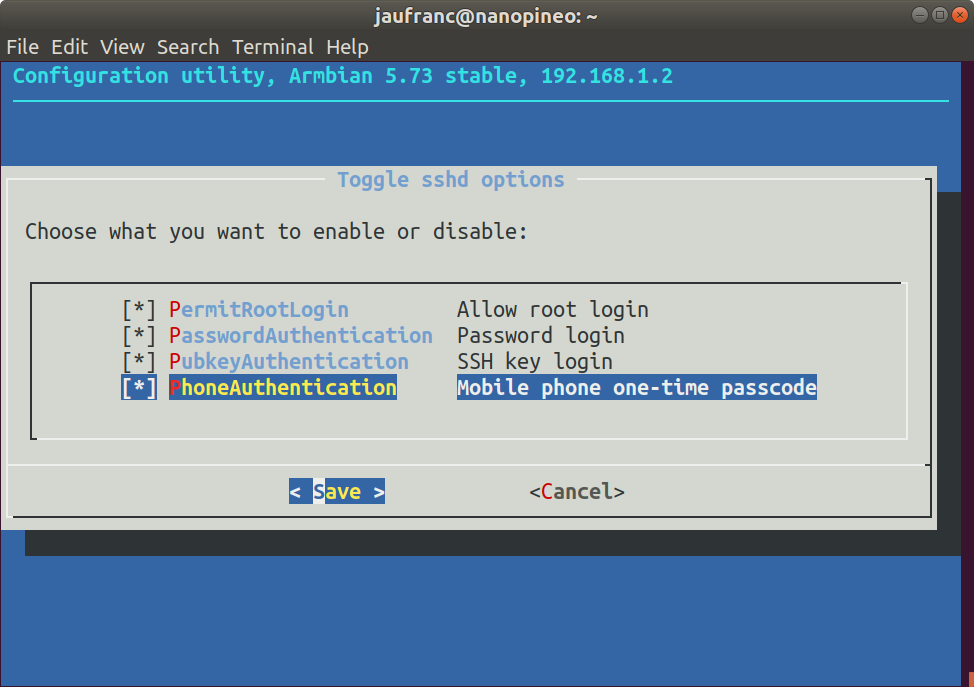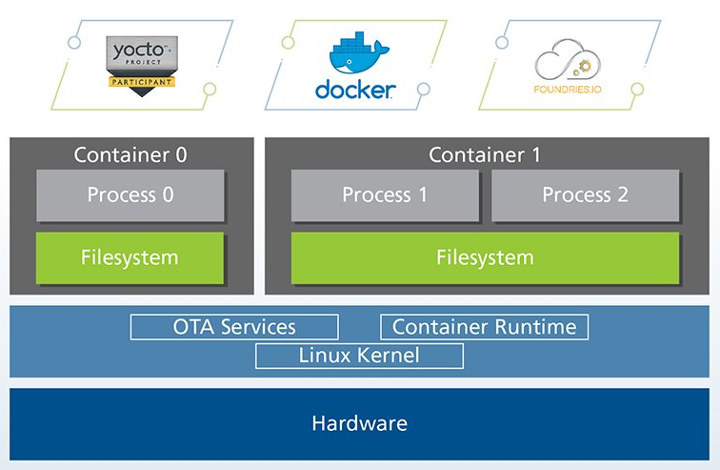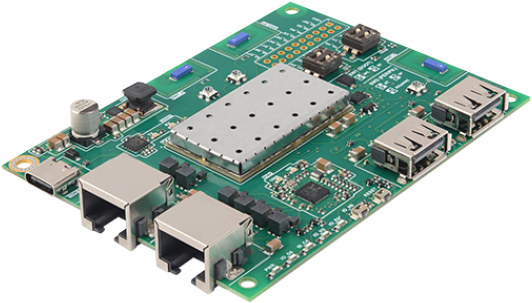NXP QorIQ LayerScape LS1028A communication SoC was first unveiled in March 2017 with two Armv8 cores, GPU and LCD controller for HMI systems, as well as Time-Sensitive Networking (TSN) capabilities useful in industrial settings. As usual it takes a while before the company finalize their design and software support, but LS1028A has started to appear at least in one hardware platform that’s supposed to launch this quarter (Q2 2019): MicroSys miriac MPX-LS1028A system-on-module. miriac MPX-LS1028A SoM specifications: SoC – NXP QorIQ LS1018 / LS1028 single / dual core Arm Cortex-A72 clocked at up to 1.3 GHz with MXC Vivante GPU, Mali Display Processor, configurable cryptographic offload engines (Optional: LS1017/LS1027 without GPU for cost saving) System Memory – Up to 4GB 32 Bit DDR4 with ECC RAM at up to 1600 MT/s Storage – Up to 256MB Serial NOR Flash & up to 4GB Serial NAND Flash; EEPROM MXM 2.0 edge […]
Aconno Bluetooth Beacons Come with Various Sensors, Nordic Semi nRF52 BLE SoC
We first covered products from Aconno is 2017 with their Bluetooth LE development board powered by the company’s ACN52832 BLE module based on Nordic Semi nRF52832 ARM Cortex-M4 multi-procotol wireless SoC. Since then they’ve launched several small Bluetooth beacon modules based on ACN52832, and the company has what they call a presale promotion until May 21st, but it looks really like a group buying event for their existing BLE modules where the price goes down as more people purchase modules. Six Bluetooth modules are offered: acnSENSA multisensor Bluetooth tag with temperature, light, humidity, barometer, accelerometer, magnetometer, gyroscope acnBEACON programmable Bluetooth tag acnACT BLE beacon with button and RGD LED, magnetometer, phototransistor acnNFC programmable Bluetooth tag with NFC tag emulator acnRANGE distance measuring beacon with time-of-flight sensor acnFIND Bluetooth smart tag with LED, sound and accelerometer All modules come with a replaceable CR2450 battery, and IP65 enclosure. Pricing currently ranges from […]
Linux 5.1 Release – Main Changes, Arm, MIPS & RISC-V Architectures
Linus Torvalds has just announced the release of Linux 5.1: So it’s a bit later in the day than I usually do this, just because I was waffling about the release. Partly because I got some small pull requests today, but mostly just because I wasn’t looking forward to the timing of this upcoming 5.2 merge window. But the last-minute pull requests really weren’t big enough to justify delaying things over, and hopefully the merge window timing won’t be all that painful either. I just happen to have the college graduation of my oldest happen right smack dab in the middle of the upcoming merge window, so I might be effectively offline for a few days there. If worst comes to worst, I’ll extend it to make it all work, but I don’t think it will be needed. Anyway, on to 5.1 itself. The past week has been pretty calm, […]
Grove AI HAT Helps Raspberry Pi Run Edge Computing Workloads
Last year we wrote about Kendryte K210 dual core RISC-V processor specifically designed for for machine vision and machine hearing as well as the corresponding Kendryte KD233 which enables inference at the edge, e.g. tasks such as face recognition or object detection. Latter on we found the processor in Sipeed M1 module which went for as low as $5 in a crowdfunding campaign, and was fitted to some low cost boards now selling for $12.90 on Seeed Studio. The latter company has now designed Grove AI HAT that aims to assist Raspberry Pi in running the edge computing workloads previously described, as exposes 6 Grove interfaces to extend functionality with some of the Grove add-on modules. Grove AI HAT specifications: AI Module – Sipeed “MAIX” M1 with Kendryte K210 dual core RISC-V processor @ 600 MHz, KPU Convolutional Neural Network (CNN) hardware accelerator, APU audio hardware accelerator, 8 MB general […]
Pinebook Pro Arm Laptop Video Demo
Pine64 first revealed working on Pinebook Pro Arm Linux laptop at FOSDEM 2019 back at the end of January. The first Pinebook laptop had limited hardware resources, and as such was meant for simple tasks, but Pinebook Pro equipped with Rockchip RK3399 processor, 4GB RAM, 64GB to 128GB flash, and a 14″ Full HD display is designed to be used as your main laptop. That means everything needs to work from 3D graphics acceleration, to hardware video decoding, and USB-C video output. Lukasz Erecinski very recently shot a demo of the laptop in action, and everything looks very good, meaning the laptop should be come available soon. You can watch the demo further below, but if you are in a rush here’s what has been tested and works: Ubuntu & Debian with MATE desktop 4K video playback 3D graphics acceleration for games (Quake demo) 3D graphics acceleration in Chromium web […]
Enabling Two-Factor Authentication for SSH Access in Armbian
Until today, I only knew of two authentication methods for SSH: the traditional username/password and key-based login with private/public keys with the latter being more secure and not requiring any password. But I’ve just found out it’s also possible to login to SSH using two-factor authentication relying on your smartphone to get an OTP code like you would to access some banking services as it can easily be enabled in Armbian. First you’ll want to enable key-based login with private/public keys, or you won’t be able to access your board anymore after enabling 2FA except via the serial console. Now simply start armbian-config, and go to System Settings->Reconfigure SSH daemon to enable PhoneAuthentication “mobile phone one-time passcode”. We’re not done yet, so don’t close Armbian-config You’d then need an Android or iOS phone running Google Authenticator app to receive the OTP (one-time password). After enabling PhoneAuthenticator in armbian-config, you’ll see […]
Toradex Torizon Industrial Linux Distribution Targets Windows Developers
When we interviewed Toradex right before Embedded World 2019, they told us they would focus on their new software offering called Torizon, an easy-to-use industrial Linux Platform, especially targeting customers are coming from the Windows / WinCE environment or who have only experience with application development and are not embedded Linux specialists. The company has now officially launched Torizon, and provided more details about their industrial open source software solution especially optimized for their NXP i.MX modules. Torizon specifically relies on foundries.io Linux microPlatform which provides full system with a recent stable kernel, a minimal base system built with OpenEmbedded/Yocto, and a runtime to deploy applications and services in Docker containers. The microPlatform is part of TorizonCore (light blue section above) that also includes an OTA client (Aktualizr). TorizonCore is free open-source software, and serves as the base to run software containers. To get started, Torizon provides a Debian container […]
Komikan is a Realtek WiFi 802.11ac Wave2 Module & Development Kit
8devices has been developping and selling WiFi modules such as their Rambutan Atheros module, and the now-discontinued Carambola module. The company is now back with Komikan, an 802.11ac Wave 2 + Bluetooth 4.1 module, as well as the corresponding Komikan development kit. Komikan 802.11ac Wave 2 Module Specifications: CPU – Realtek RTL8197FS MIPS 24Kc processor @ 1 GHz System Memory – 128 MB RAM Storage – 32MB flash Connectivity WiFi 4 802.11 b/g/n 2×2 MIMO via RTL8197FS WiFi 5 802.11ac Wave 2 2×2 MIMO via Realtek RTL8822BEH Bluetooth v2.1/3.0/4.1 Max output power – 22 dBm per chain Antenna – GPIO pins for external antenna Expansion via bottom pads – 44x GPIO, 2x USB, 4x UART (one for BT), RGMII, 2x SPI, PWM, MDIO, eMMC, JTAG, 2x I2S, PCM, 2x I2C, P-NAND Power supply – 3.3V, max power consumption 6W Dimensions – 37.5 x 21.3 mm The two integrated radios (2.4 […]


